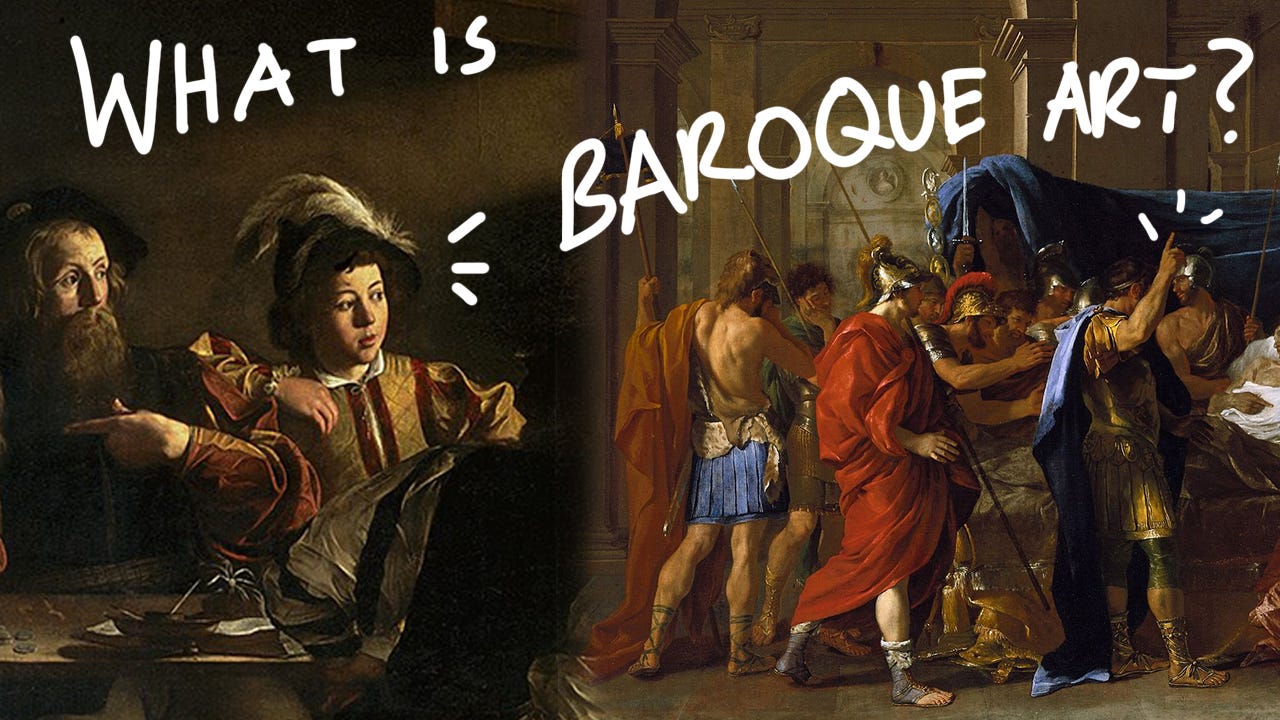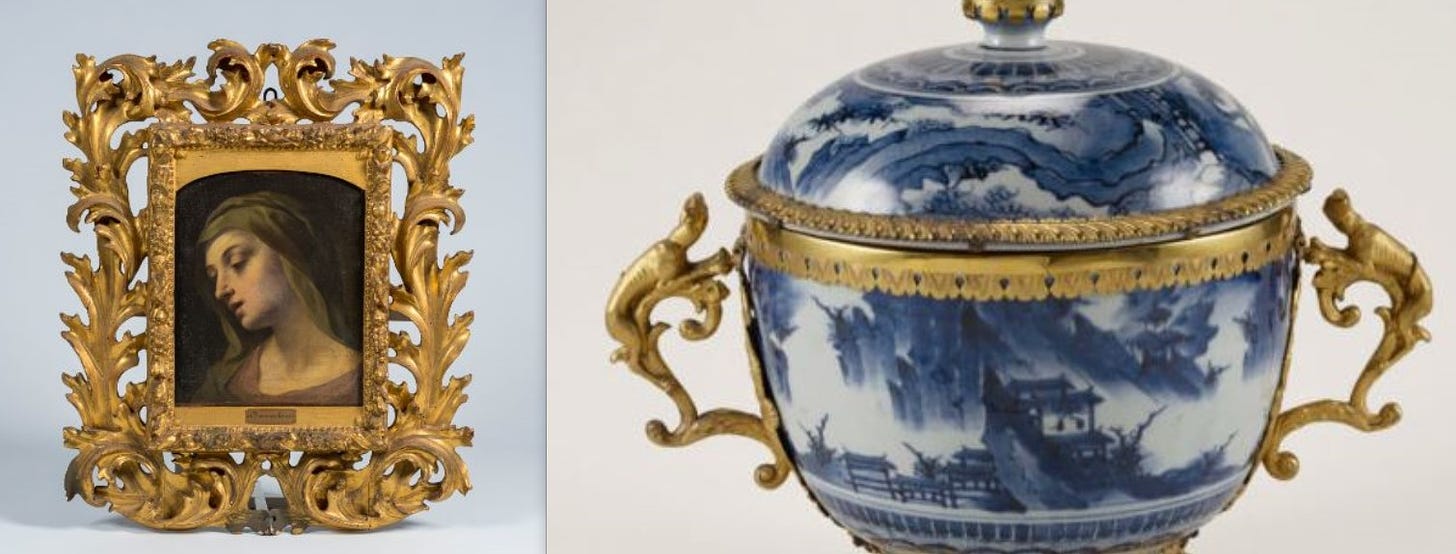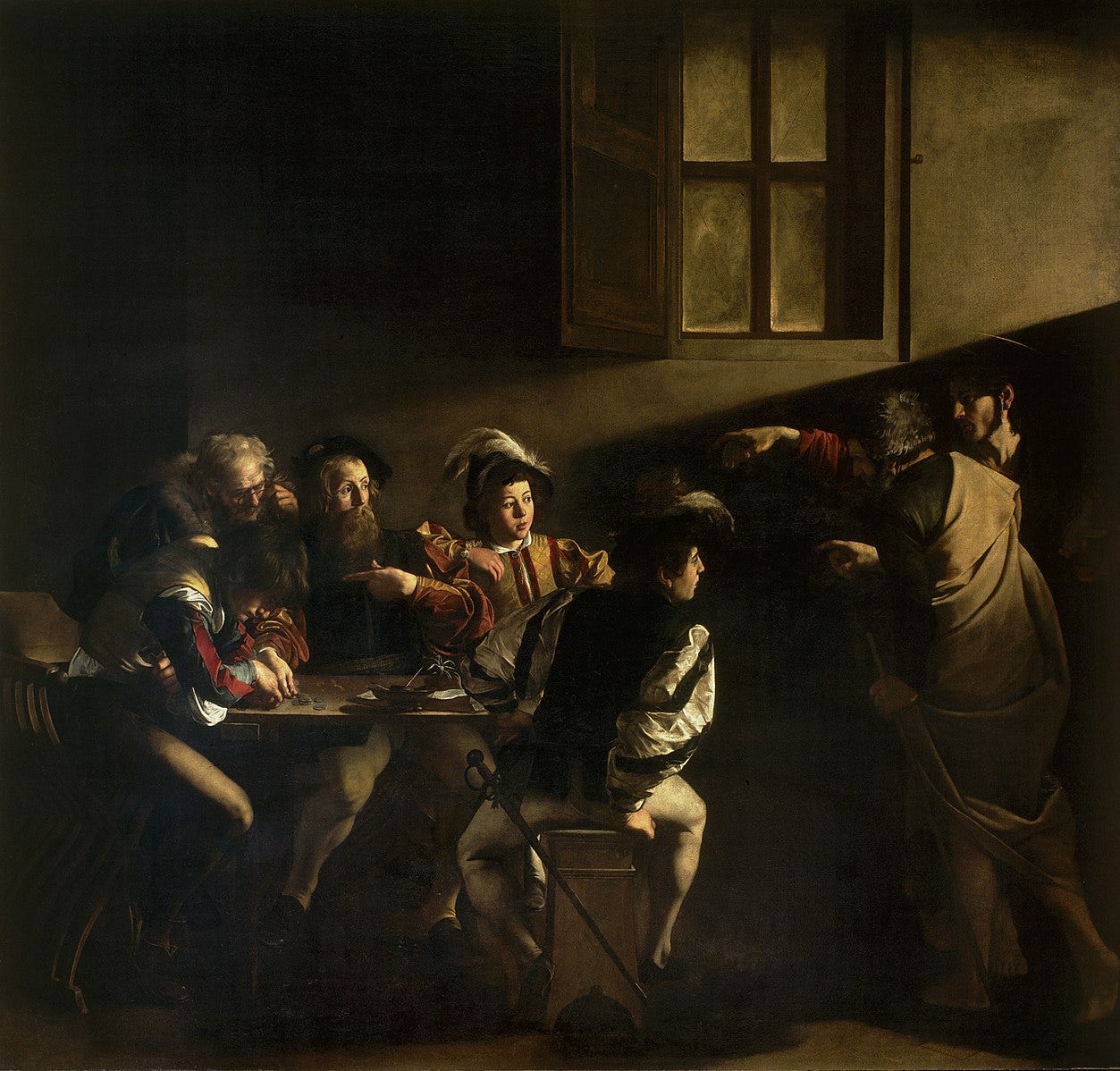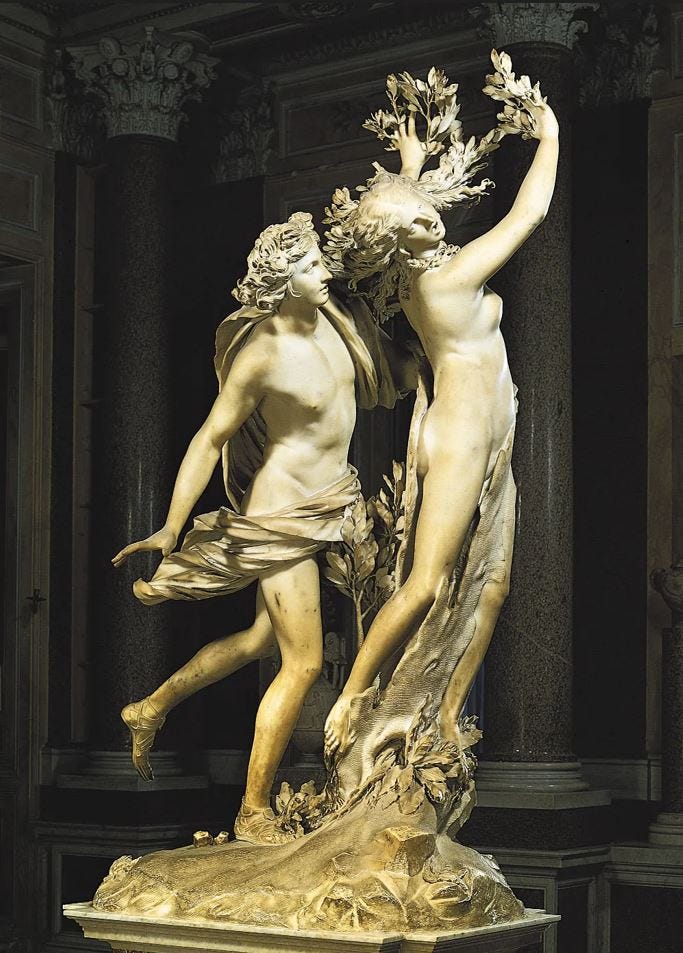What is Baroque Art?
Introduction the new era after Late Renaissance/Mannerism! Let's learn more!
What in the world is “Baroque Art”? Sounds fun!
Have you heard of “Baroque Art”? Well, today my friends, let’s be curious and discover this together and dive deeper into the world of Baroque Art.
We’ll be learning some of the important things about Baroque art and why it was such a fascinating and amazing era.
What is Baroque Art?
Interesting and main things to know about the Baroque time
What Identifies and Characteristics of Baroque Art?
Famous Artists from the Baroque period.
What is Baroque Art?
Baroque art also called “Baroquism” flourished around the 17th Century. Started around 1600 to 1750 throughout Europe. It followed right after the Renaissance and Late Renaissance (A.K.A. Mannerism) and after the Baroque period was the Rococo and Neoclassicism.
Did you know that the word “Baroque” came from the French word “Barroque” meaning “irregularly shaped” At first, the French word was used mostly to refer to the irregular and odd shapes of pearls.
Eventually, it came to describe an extravagant style of art characterized by curving lines and gilt. (This is also called gilding, the art of decorating the whole or part of the wood, metal, glass, or other objects with gold in leaf or powder forms.) Gilded objects are called and described as“Gilt”
By creating artworks with lots of emotion, tension, and drama, Baroque artists are highly interested in using intricate shapes or decorated with complex patterns in their paintings, sculptures, decorative arts, and architecture.
Interesting and major things to know about Baroque art.
The Roman Catholic Church gained control over the Southern Europe. The Catholic counter-revolution in protest to the Protestant Reformation. To show strength in power, new works were commissioned by the popes in both art and architecture.
Meanwhile, Nothern Europe was mostly occupied by Protestants and relied on Monarch patrons such as Louis XIV and Charles I. But one thing was they did not use art the same way as the catholic church did.
Science and Astronomy started to influence art. Filling the art world with new curiosity and discoveries and opening up new subjects to paint and draw.
Wealth accumulated through trade in the Dutch Golden Age and Middle-class merchants and patrons were in search of small baroque paintings for their homes along with other types of paintings like flower and still life and genres painting.
Prints were also made for those who were interested in future purchases of the original Baroque painting.
Characteristics of Baroque Art
Baroque art focuses on biblical, mythological, and historical painting and natural landscapes. Paying close attention to the smallest details, works have a sense of emotion and can capture dramatic emotions.
A technique that was popularized by Caravaggio “Tenebrism” came from the Italian word “Tenebroso” meaning darkened and obscured. Allowing the figure to be shadowed and then dramatically illuminated through light.
Fun fact, each of the monarchs liked to commission different types of paintings
Spanish and English kings preferred Portraits.
French kings liked classical landscapes.
Wealthy merchants of the north liked smaller works like still life paintings and genre painting.
Famous Artists of the Baroque period
Like the Renaissance, The Baroques also had different periods. Depending on where in Europe, they painted a variety of different subjects.
Caravaggio (1571 - 1610) Early Baroque started in Rome in Italy. Capturing drama at its climax. Caravaggio is known for depicting biblical and mythological scenes.
Diego Velázquez (1599 - 1660) Velázquez was a court painting for King Philip IV.

Peter Paul Rubens (1599-1660) Flemish Baroque painter known for his inventive and amazing storytelling in his religious and mythological scenes.
Jan Brueghel the Elder (1568-1625) is known for his landscape and peasant scenes. He was also very skilled in painting still life, landscapes, and flowers.
Rembrandt Van Rijn (1606-1669) was Famous for his well-known self-portraits and biblical scenes. His brilliant way of depicting the story uses dramatic lighting and thoughtful composition to capture the dynamic emotions in his paintings.
Anthony Van Dyck (1599-1641) If you did not know, he was one of Peter Paul Ruben’s best students. Eventually became the Court painter for Charles I of England.
Johannes Vermeer (1632-1676) was known for his ability to master light and to captivate the scenes of everyday life. Throughout his life, he only created around 36 oil paintings but not exceeding 60 works of art. Since he passed away at the age of 43.
Nicolas Poussin (1594-1665) was Known to be the leading painter of the classical French Baroque, even if he spent most of his life in Rome. Most of his works revolve around religious and mythological subjects.
Gian Lorenzo Bernini () Was perhaps known to be the greatest sculptor of the 17th century. Creating dynamic and filled with characterized lively energy and excitement really embodies the art of the Baroque period.
Mini Exercise for you!
This week, I want you to explore more on your own and see what else you can discover about the Baroque era. From discovering some of your new favorite artists from this time and era.
Have fun learning and exploring!
What did you discover?
I’m curious to see your thoughts on Baroque art and If you also discovered something new about it, I would love to know! (You can comment and share your thoughts below!)
Thank you for reading my fun little discovery and I hope you also get to learn and share your discoveries too!
Share this with fellow friends, family, and artists who would benefit and love learning more about art! On social media, email, or text. Thanks for reading!
PS Feel free to watch my new YouTube video about this new post! Sharing thoughts and ideas! If you like it, please like and subscribe to my YouTube channel for more videos like these!

















